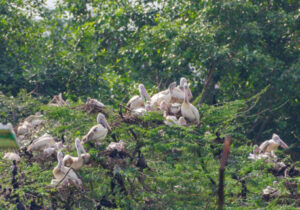Registered with the Registrar of Newspapers for India under R.N.I 53640/91
Vol. XXXI No.7, July 16-31, 2021
The ecological history of Chennai – II
BY R.J. RANJIT DANIELS, N. MUTHU KARTHICK, ANJANA VENCATESAN AND JAYSHREE VENCATESAN
(Continued from last fortnight)

Urban planning buffered by biodiversity
The many environmental problems of the city from solid waste management to flooding are the results of unsustainable development. Chennai must plan to buffer its growth with biodiversity, ensuring the preservation of the few fragments of natural habitats found within the urban limits. As storehouses of information, these habitats and the associated biodiversity tell us where urban planning has gone wrong.
Natural habitats within the city’s limits should be declared as ‘nature monuments’ and carefully managed. The concept of ‘wastelands’ does not exist in nature and the practice of designating open spaces as wastelands needs to be stopped. Instead, these areas should be designated as nature utility spaces (NUS). NUS are not only habitats for biodiversity but they also play a major role in flood-mitigation in urban landscapes.
Chennai’s NUS should be carefully mapped and preserved. Although Chennai has lost many of these valuable habitats due to ill-planned development, there are still a few left within its urban limits. The Pallikarnai Marsh, a designated reserve forest, is probably the most important NUS. Close to the marsh is another important NUS – the Nanmangalam Reserve Forest. It is a refuge to many species of plants and animals that have been exterminated from other parts of the city.
The proposed system of setting aside NUS should include wetlands. Chennai’s wetlands have played a major role in sustaining aquatic biodiversity and in flood mitigation. Unfortunately, the last 30 years have witnessed the most drastic transformation of Chennai’s wetlands where many have suffered degradation due to solid waste disposal and others completely lost to infrastructure development.
A paradigm shift in the urban development of Chennai is needed where the voices of the city’s biodiversity are heard. With the Palmyra palm as the designated ‘flagship’, the future urban planning of the city should make space for the ants and the antelopes alike. Courtesy: https://india.mongabay.com/2020/09/commentary-of-ants-and-antelopes-the-ecological-history-of-chennai-was-not-what-one-would-imagine/.

